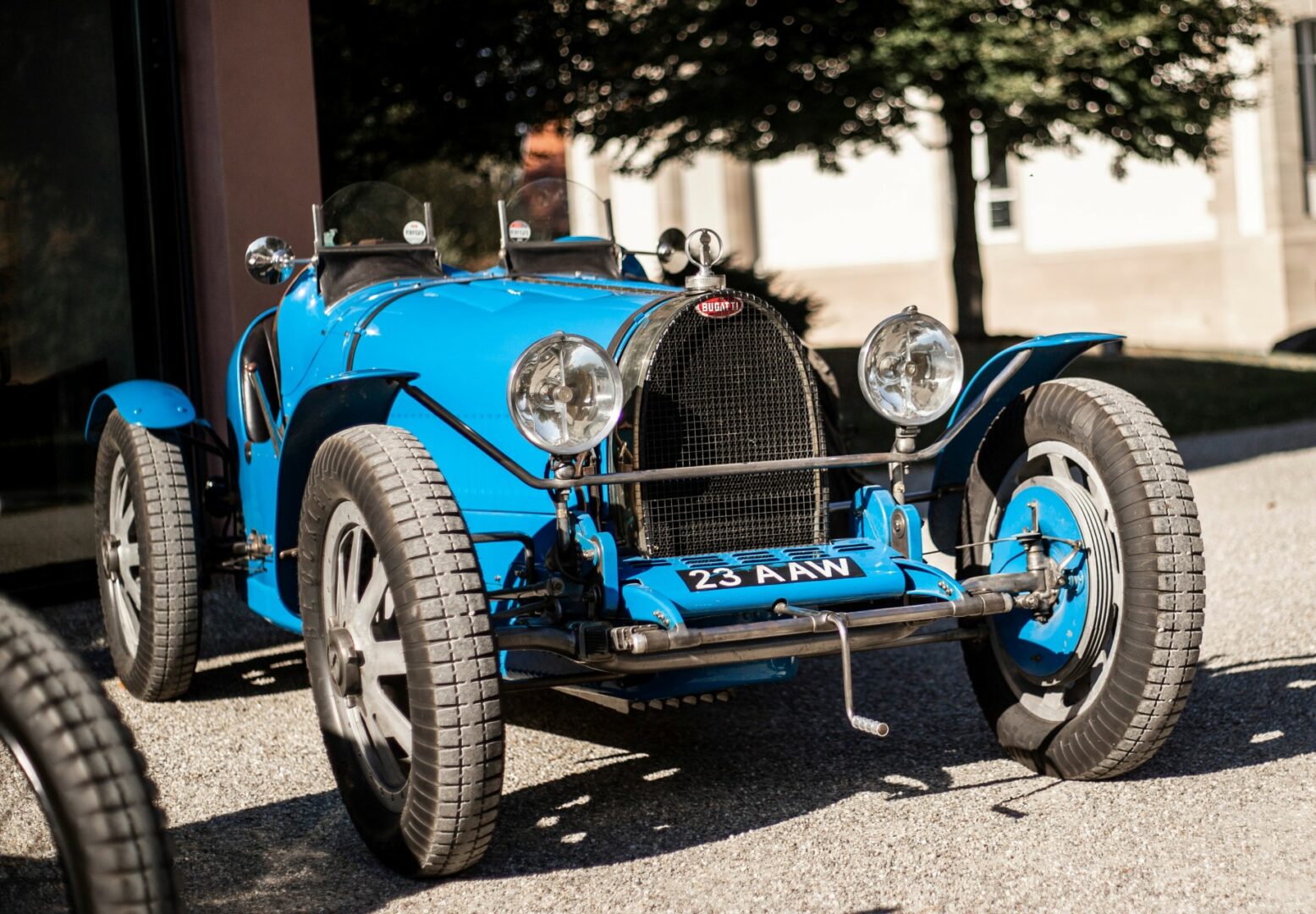Bugatti is the synonym of the automotive industry. Its history is extremely interesting.
It “started” with Ettore Bugatti (1881 – 1947), the son of Carl Bugatti (artist and furniture designer). Ettore designed the first car as a 19-year-old and received an award for it at the Milan Trade Fair.

It was the entrance to the pedestal of other successes – the vehicle was bought by Baron Dietrich of Niederbronn, who began to sponsor Bugatti. The first series of vehicles were labeled De Dietrich Bugatti. Another successful milestone was that he became a chief engineer at Deutz AG in Cologne.

In the Memoirs
In 1909 he constructed the first four-cylinder vehicle – the Bugatti Type 10. Thanks to the exhibition premiere at the Paris Motor Show, he received orders for the production of additional pieces. It was also the year of the founding of the separate Bugatti brand in Molsheim (France). Of the successful cars, we should mention, in particular, the Type 35 with the first eight-cylinder engine (since 1924), which in various modifications won more than a thousand races.

In addition to racing vehicles, there were also super luxury limousines, the most famous of which was the Bugatti Type 41 Royale (1927 – 1933). The Type 57 SC Atalante was designed by his son Jean Bugatti (1909 – 1939), who died tragically, while avoiding a drunken cyclist. Bugatti was associated with motorsport from the beginning and achieved great success.

The brand came to end in 1963, and the revival occurred only in 1987, when the Italian entrepreneur Artioli founded the company Bugatti Automobili SpA, which, on the 110th anniversary of the birth of Ettore Bugatti, presented the supercar EB110 in Paris. It was the fastest serial car in the world at the time (351 km/h). 139 pieces were produced, however, 1995 meant its collapse.

The Modern Era
In 1998, the brand was revived by Volkswagen, and Bugatti International SA was established. Important milestones include the advent of the series supercar Bugatti Veyron EB 16.4 (2005), which was at that time the fastest, technically advanced and one of the most expensive vehicles in the world. It was powered by a turbocharged 8.0 W16 engine (736 kW/1001 hp; 1250 Nm), the maximum speed was over 400 km/h and the acceleration from 0 to 100 km/h took only 2.5 s. It should be noted that several modifications to this model were subsequently made.

2016 brought another model with the Bugatti – Chiron logo at the Geneva Motor Show. It was again driven by an 8.0 W16 turbocharged engine (1103 kW/1500 hp; 1600 Nm). The vehicle developed a speed higher than 435 km/h, but it was electronically limited to 420 km/h. “A hundred” was handled in 2.5 seconds.

The fastest hyper sports car has become the Bugatti Chiron Super Sport 300+. In 2019, the first production vehicle on the Ehra-Lessien circuit exceeded the speed limit of 490 km/h (490.484 km/h). Under the body, it has a supercharged 8.0 W16 engine (1176 kW/1600 hp). Thirty lucky people had to “dig deep into their pockets” for 3.5 million euros.

These were some higlights from the rich history of the Bugatti, which has now come under the wing of Rimac through the Porsche. Are you ready for the electrical era?

Text: Peter Stano, photo: Bugatti













